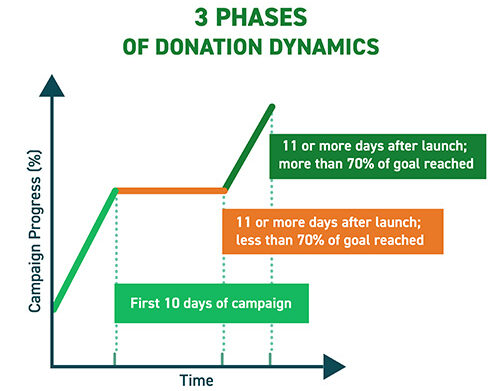Whether it’s for a commercial venture or a charitable cause, a crowdfunding campaign is likely to fail unless it reaches more than 70% of its goal within the first 20 days of launching—according to new research from UT Dallas.
UT Dallas marketing professor emeritus Brian Ratchford and his team explored the effects of social media on crowdfunding across nearly 440 GoFundMe campaigns. They found that social media is most helpful in the first 10 days of a campaign.

UT Dallas marketing professor emeritus Brian Ratchford [Photo: UT Dallas]
“Our results indicate that the general pattern of behavior is the same for purely charitable campaigns as it is for campaigns that provide an incentive to donate,” Ratchford said in a statement, “suggesting that the psychological motives are important for both types of campaigns and that the economic motive doesn’t tell the whole story.”
The team found that crowdfunding campaigns generally follow three phases. In the first, within 10 days of launch, the number of donors and donation amounts are at their highest. In the second phase, the after 11 days and with less than 70% of the goal met, donors are likely to follow the “herding effect”—waiting to contribute if the campaign seems to be slowing or creating an influx of donations if many people are joining. In the third phase, after 70% of the goal has been reached, donations tend to increase due to either the cumulative donations making the campaign seem more desirable or due to increased motivation to push the campaign to its goal.
Campaigns must do well at the outset to help ensure success
“If a campaign doesn’t do well at the outset, it is unlikely to succeed,” Ratchford said.

[Graphic: UT Dallas]
While the researchers say more studying needs to be done, they found preliminary evidence that promoting crowdfunding campaigns, especially charitable, social, and political ones, can potentially increase “slacktivism”—the tendency for people to like or share the campaign on social media, without actually contributing financially to the campaign.
Since GoFundMe launched in 2010, more than $15 billion has been raised on its platform.
Collected data from more than 6,000 observations
For their study, which was published last month in the Journal of Interactive Marketing, the researchers collected data from more than 6,000 observations to look at the impact of things like shares, likes, and past donations on the number of donors and donation amount across campaigns.
Ratchford’s co-authors on the study include Yashar Dehdashti, assistant professor of marketing at Texas Wesleyan University; Aidin Namin, associate professor of marketing analytics at Loyola Marymount University; and corresponding author Lawrence Chonko professor of marketing at UT Arlington.
“Make the campaign visible at the outset,” Ratchford suggested. “Although we didn’t study them, reminders might be a way to rejuvenate a flagging campaign.”
![]()
Get on the list.
Dallas Innovates, every day.
Sign up to keep your eye on what’s new and next in Dallas-Fort Worth, every day.

































































